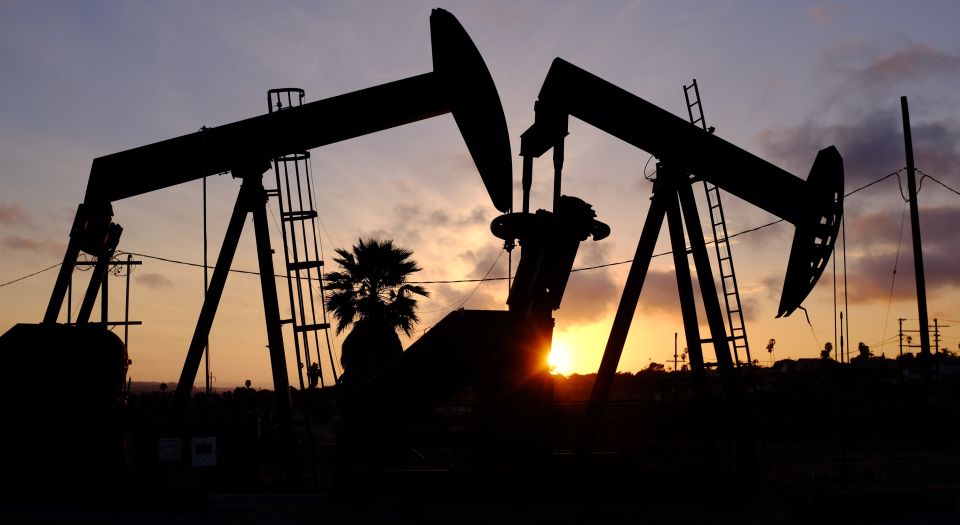Making the case for shale gas and oil
Both advocates and critics of fracking have it wrong. Also, both use the wrong word.

Want unlimited, ad-free access? Become a spiked supporter.
In a culture that lacks discrimination and is sceptical about the benefits of growth, capitalists like Cuadrilla and politicians like David Cameron won’t argue for shale oil and gas on the principled grounds of the increase in productivity that it offers to energy production. And in a society that allows fearful emotions to run amok, environmentalists would rather ban shale than regulate it rationally.
Instead, both sides strike playground postures around an ugly word that does no justice to human ingenuity: ‘fracking’.
Shale’s defenders only back fracking because they dream it will bring Britain ‘energy security’ – independence from Russia’s Gazprom and oil sheikhs alike. Meanwhile, the United Nations, American celebrities and Britain’s own radical film director Ken Loach revile fracking as a mortal peril.
Both sides err.
Shale consists of stacked, paper-thin sheets of fine-grained clay minerals which, though porous, trap hydrocarbons and water. ‘Fracking’ means injecting high-pressure water mixed with sand and chemicals to create or widen thin cracks in shale. Artificial pressure is needed to overcome the sort that occurs naturally below ground; it pushes the hydrocarbons and other fluids along drilled-out boreholes until they reach the surface.
Now, although ‘frack’ has an aggressive, monosyllabic sound to it, lending itself to profound environmentalist propaganda (‘FRACK OFF’, or ‘fracking is a dirty word’), what’s more important than hydraulic fracturing is the adding of multiple boreholes (1) to vertical wells by more-or-less horizontal drilling along what are termed ‘laterals’ (2).
While conventional vertical drilling accessed pockets of gas and oil trapped in underground reservoirs typically tens of metres deep, horizontal drilling allows whole layers of shale to be targeted along laterals more than one-kilometre long. Rock above and below laterals is then fractured at intervals along them. Furthermore, new IT and sensing tools now make horizontal drilling relatively fast and accurate, and ensure that it’s done not blind, but with eyes open (3).
Altogether, horizontal drilling for shale ‘gives initial production rates of 3million cubic feet per day or higher, compared with 1million cubic feet per day or less for a conventional gas well’. And while the hydrocarbons captured from a well decline as it is depleted, for wells drilled in 2011 the ‘full-cycle’ cost of shale gas produced was 40-50 per cent less than that of gas from conventional wells.
The productivity of shale operations has risen. Between 2007 and 2014 in the US, production per rig through the addition of new wells soared with oil in the Bakken, Eagle Ford and Niobrara fields, and with gas in the Haynesville and Marcellus. US lateral lengths now extend up to 3.25 kilometres. As the depths accessed by drilling increase – China has struck shale 4.5 kilometres down – so extra layers of shale can be harvested. The number of fracks per well are also being packed more tightly.
So much for what Karl Marx called the ‘civilising influence’ intrinsic to capital: in this case, the high-tech cheapening of the cost of producing of oil and gas. This is a dynamic which is progressive, and it means that we must support shale development, if not in every particular location (4), then certainly on principle.
The only principle in which shale’s opponents are interested, by contrast, is protecting Mother Earth – and protecting Her even from the carbon emissions that attend shale. The technological innovations I have described get no mention. Carbon capture and storage, which, if properly developed (using much of the expertise gained in shale drilling) would mitigate the CO2 unleashed from burning shale gas at power stations, is also dismissed (5).
Environmentalist campaigns against shale began as hostility to the impetus it could give to global warming. However, as that issue has gone off the boil, so other arguments have been deployed to buttress reactionary, Not In My Back Yard resistance to change. When these arguments are not about a shale site disrupting local life, farming, wildlife, recreation, tourism, house prices or the adequacy of water supplies (6), they focus on reputed threats to human health: accidents, contamination and earthquakes (7).
Yet if shale is so lethal, why are America’s hospitals not full with casualties from it? In the land of litigation, where the number of claimants against BP over the Deepwater Horizon disaster could easily reach 200,000, why does a Google search for ‘shale lawsuits’ bring up just scores of results?
The fact that shale operators like to refer to their drillings as ‘plays’ is one symptom among many that undermines any confidence we might otherwise have in them. However, in the US workforce, death rates are about seven times higher for jobs in logging and fishing than they are for jobs in construction – of which jobs around shale, partly because of its high productivity, form only a small part. In the US, the elite Sierra Club’s group Earthjustice (‘because the Earth needs a good lawyer’) maps what it calls ‘fraccidents’. Yet hardly any of the lurid skulls-and-crossbones the map displays refer to human fatalities.
Shale development is a high-tech business; like other such businesses – airlines, nuclear power – it is overwhelmingly safe. If it was even half as dangerous as airlines or nuclear power, even US regulators would be conducting inquiries. Obviously shale firms do buy the silence of distressed individuals, and no doubt connive with regulators. But to believe that there is major, consistent and undetected collusion between shale operators and regulators to cover up injuries, deaths and diseases is to give way to today’s fad for conspiracy theories.
Anti-frackers like to believe that the Earth is inherently non-linear and unknowable, full of catastrophe for generations yet unborn, liable to be irreversibly contaminated, and about to hit a tipping-point. Yet these are themes that Greens have long spun in debates around climate change.
In many ways, the campaign against shale follows that against electric cables or ‘wind-turbine syndrome’. The issue here is not the dangers of each particular energy source, but society’s free-floating anxiety about every kind of technological advance. In both the US, and in Europe, where population densities are, overall but not everywhere, higher than in North America, there is a case for regulation of shale operations – insofar as the capitalist state is capable of neither overdoing nor underdoing this. Yet a blanket ban on shale is, in effect, an attempt to turn the clock back. It should not be countenanced.
James Woudhuysen is professor of forecasting and innovation at De Montfort University, Leicester, and editor of Big Potatoes: the London Manifesto for Innovation. Read his blog here.
Footnotes:
(1) Boreholes are, in effect, tunnels drilled from a surface location. At the surface, a mobile drilling rig sits atop a ‘pad’, from which multiple wellbores are drilled by moving the rig just a few metres. After that, the rig is disassembled, moved on, and reassembled elsewhere. Pad drilling, which began in 2006, means that multiple wellbores are drilled out in a single visit by a rig. Note that, to keep fractures open, fluids and particles (‘proppants’) are pumped into them.
(2) A fine paper on the history of shale gas in the US describes how, in the 1990s, the advent of drilling for offshore oil in deep waters, by demanding dearer rigs, led to directional drilling. To amortise big investments, as many as 60 separate directional wells are sometimes now accessed from one deepwater platform. Horizontal drilling itself emerged through the development of hydraulic downhole motors, which allow drills to turn tight corners, head sideways, and obviate the need to turn whole assemblies (‘drill strings’) from the surface. In turn, the location of the motor and the drill bit are determined by inertial navigation, gyroscopic compasses and telemetry.
(3) 3D seismic imaging, in which vibrational waves are set off and their reflections read, helps determine the geology of shale formations, and can be enhanced by extending it to high frequencies. So too does geosteering (logging while drilling), in which gamma-ray, resistivity and colour sensing are done continuously and in real time so as to detect, among other things, when natural faults – as occur in both Europe and the US – are intersected (Cuadrilla did this near Blackpool in 2011, but the ‘earthquake’ that resulted was a modest tremor). Then X-ray fluorescence of fresh cuttings, and mass spectrometry of mud gases, add to the picture, as well technologies for tracking pressure, porosity, fluids and acoustic response. All these tools, and lots of clever IT, now direct horizontal drilling, and help operators know when to stop.
(4) To the extent that shale in Europe lies at greater depths than in the US, which is by no means always the case, that will tend to make exploitation dearer, but interference with aquifers less likely.
(5) Just as Greens argue that shale in the UK will take years to develop, and will therefore emerge too late to solve the country’s looming problems in terms of electric power capacity, so they argue that carbon capture and storage (CCS) is nowhere near maturity. This is true, but dishonest. Greens launch chains-and-glue protests to try to delay shale and indeed nuclear energy, too. They then turn round and say that these technologies, like CCS, are advancing too slowly to be of any help. Nice! As for the CO2 generated by the use of shale oil, improving the energy efficiency of transport, and bringing forward R&D around the air capture of atmospheric CO2, can begin to deal with this.
(6) With the adequacy of water supplies, the prime case for worry is China. However, the closing section of my piece shows that, even here, there is nothing to fear.
(7) A fourth threat to human health that is widely cited is the gas that escapes in shale operations, otherwise known as fugitive methane. Methane is also a powerful greenhouse gas; but despite the increase in shale operations in the US, the amount of it that has escaped there from all sources, onshore and offshore, has fallen: ‘emissions were estimated as 2,545Gg in 2011, compared with 2,948Gg in 2009 and 2,724Gg in 2010’. Better equipment, and in particular better pneumatic controllers, would speed this kind of decline. For an alarmist viewpoint on fugitive methane, see here. For a rebuttal, see here; and for a response to the rebuttal that does not convince, see here.
You’ve read 3 free articles this month.
Support spiked and get unlimited access.
Help us hit our 1% target
spiked is funded by readers like you. It’s your generosity that keeps us fearless and independent.
Only 0.1% of our regular readers currently support spiked. If just 1% gave, we could grow our team – and step up the fight for free speech and democracy right when it matters most.
Join today from £5/month (£50/year) and get unlimited, ad-free access, bonus content, exclusive events and more – all while helping to keep spiked saying the unsayable.
Monthly support makes the biggest difference. Thank you.










Comments
Want to join the conversation?
Only spiked supporters and patrons, who donate regularly to us, can comment on our articles.